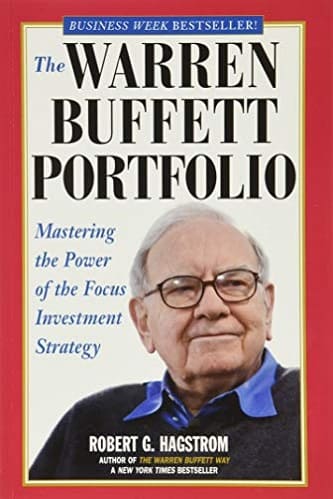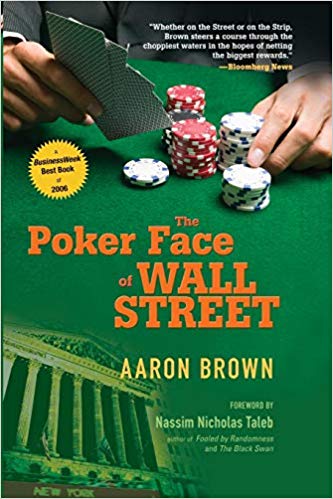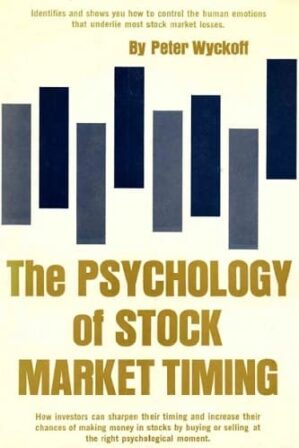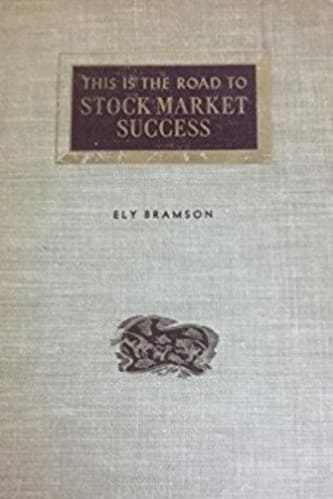Articles
The Trader’s Psyche (Nothing More Than Feelings) By Solomon Chuama
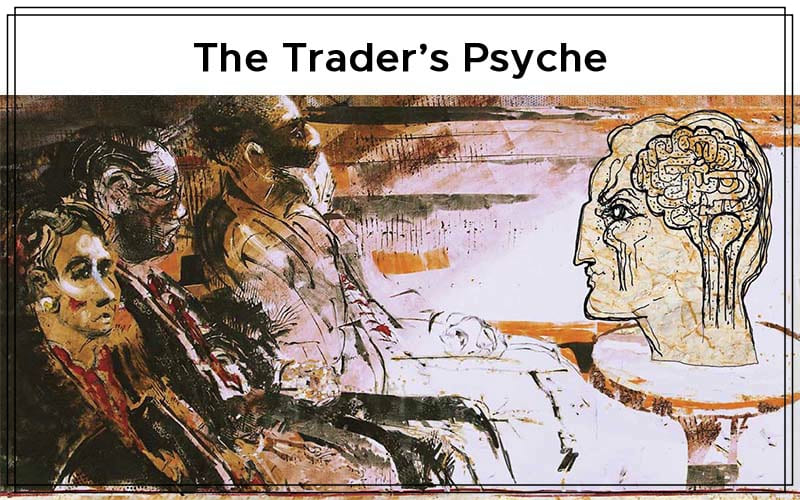
Three parties are involved in trading: the buyer, the seller, and you. Your behavior and actions play an important role in your trading results. Here’s how you can use them to your benefit. Our behavior and actions—not the market’s—are the catalyst that drives our results. The market is a strong force that is beyond anybody’s control. Successful trading can be achieved through personal determination, a disciplined trading lifestyle, and perseverance. It sounds easy, but if it were easy, there would be a higher success rate among traders. Why are 90% of traders unsuccessful? Does it have to do with their psychology?
Emotions
Greed and fear are a trader’s worst enemies. These are the emotions that form most of the trader’s psychology. Fear is an emotion that surfaces when the market moves against you. Greed is an emotion that controls you when the market moves in your favor. Most traders just want to get rich quick. Even a trader with a small account size, say, $5,000, wants to aim for big profits. On the other end of the spectrum you have traders who want to make immediate trading wins by trading big lots. There are times when a trader is faced with a series of losing trades, and when this happens, he is compelled to increase his positions to quickly make up those losses. This actually turns out to be a dangerous move and could lead to the death of a trading account.
The reason we get into such situations is that fear paralyzes us from making the most sensible decision. If you want to be successful in trading, you have to be confident, confront your fears, and accept your losses as part of trading.
Risk & Money Management Rules
Money management rules should take top priority when you create your trading plan, setup, or strategy. Without risk management, you stand the risk of losing your entire trading account. You need to establish how much you are willing to lose per position. In trading, you should establish your maximum loss per position.
The table in Figure 1 shows you a hypothetical example of risking 2% of your capital per position. In Figure 2 you see an example of risking 10% of your position on each trade. Assume you start with an account size of $10,000 and go through a streak of 10 losing trades. Risking 2% of your capital on each trade would reduce your account balance to $8337.51, which is approximately a 17% loss. Risking 10% of your capital on each trade would reduce your account balance to $3874.22, a 61% loss.
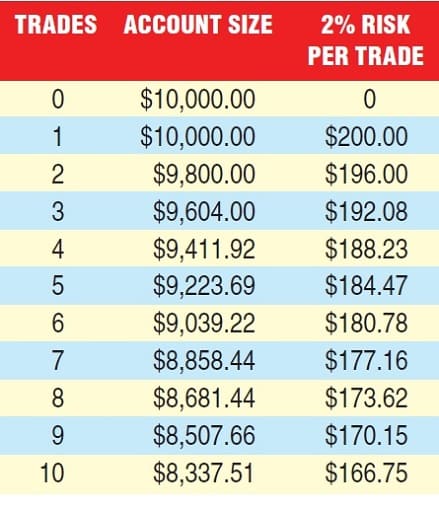
FIGURE 1: RISKING 2% OF YOUR CAPITAL. If you were to risk 2% of your capital on each trade, your account size would reduce to $8,337.51 after 10 losing trades.
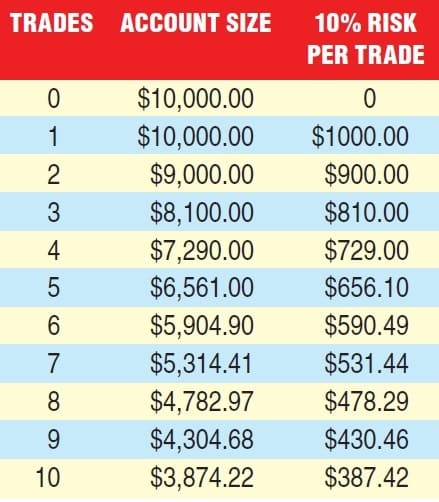
FIGURE 2: RISKING 10% OF YOUR CAPITAL. If you were to risk 10% of your capital on each trade, your account size would reduce to $3,874.22 after 10 losing trades.
From Figure 1, you can see that if you risk 2% per position to recoup your losses after the losing trades, you will need 20% of your capital to get back to breakeven. Similarly, if you are risking 10% per position, you will need 150% of your capital to get back to breakeven. Therefore, it is safer to adopt risking 2% per position just in case you have a series of losses. Accept losses and think of them as a business expense. What is important is that you have a setup that has a risk-to-reward ratio of 1:2. Apply small lot sizes and risk control measures to safeguard your capital.
Confidence & Conviction
When you do not have confidence in what you are doing, there is little chance of success in that venture. It’s the same in trading. Believe in what you are doing and don’t be afraid of making mistakes or dwell in your trading weaknesses. Conviction is similar to confidence but has to do with your trading ideas and knowledge. For example, if you have a good strategy that has worked several times, then stick with it. However, if there are too many instances of drawdown, then reduce your position size, if necessary.
Be confident, confront your fears, and accept your losses as part of trading.
The Correct Mindset & Approach
To train and nurture the mind: Only you can develop your potential to become successful. In other words, you must nurture the psychology that is necessary to develop the state of mind that will lead you to become a profitable trader.
Suggested Books and Courses About Trading Psychology
The Warren Buffett Portfolio: Mastering the Power of the Focus Investment Strategy
Original price was: $10.95.$5.48Current price is: $5.48.The Poker Face of Wall Street
Original price was: $14.66.$7.33Current price is: $7.33.The Psychology of Stock Market Timing
Original price was: $12.64.$6.32Current price is: $6.32.This Is The Road Stock Market Success
Original price was: $14.47.$7.24Current price is: $7.24.You are your own worst enemy: To be a successful trader you need to work on yourself. You need to overcome your weaknesses and mistakes. Most traders don’t recognize the need to change. The successful trader knows that it takes time, effort, and willpower to change the mindset. Each trader has a unique psyche, and hence you need to understand yourself well before taking steps to change your mindset. Mental training is your key to success: Professional traders recognize that success comes from within, which is why they practice mental training. This allows them to recognize their subconscious values that prohibit their success. Once they do that, they can transform their feelings and channel it toward a more successful career.
Associate with other traders: You often hear that two heads are better than one. Trading is a lonely profession, which is why it is important to build your trading knowledge by identifying with other traders to exchange views. Watching experienced traders in a live trading room is an excellent way to expand your trading knowledge. You get to learn the tactics and methods used by experienced traders and thereafter develop your own trading system.
Avoid overtrading: Overtrading can put your trading account at risk. If you consistently lose money using a strategy, try tweaking it or move on to another strategy. Keep a trading journal: I capture all my trading activities in an Excel spreadsheet. I enter my entry prices, exit prices, the currency pair I’m trading, my stop-loss, profit target, profit or loss, position sizes, drawdown, setups, and I write short comments in one column. I always review these data points to determine how I can improve my trading results. Reviewing the data helps me to identify whether stop-losses were placed too close or too far, if partial profits were taken too early, or if position sizes were too large or small.
Emotional & Mental Skills
Trading is a challenging business that requires professional training. Theoretically, trading is easy to learn, but applying it is extremely difficult. It brings all your emotions to the surface, some you thought never existed. The emotional and mental skills necessary to become a successful trader are often underestimated. There’s more to trading than buying, selling, and making a profit. In fact, the buying, selling, and making a profit are the result of properly channeling your emotions so you are able to successfully manage your trades. It requires active and constant training of your mind so that your thoughts move in the direction of the correct action. That is what will make you part of the successful 10%.
Solomon Chuama has been working in the financial industry for 15 years. He is a trading seminar organizer and instructor who tries to pass on to students his passion.

